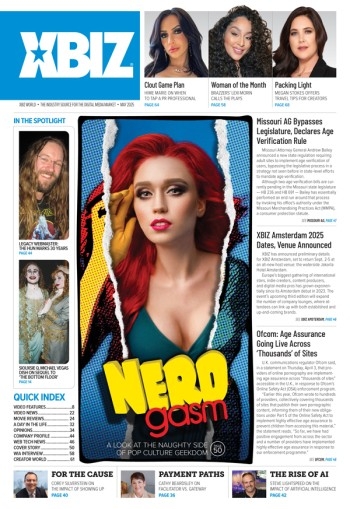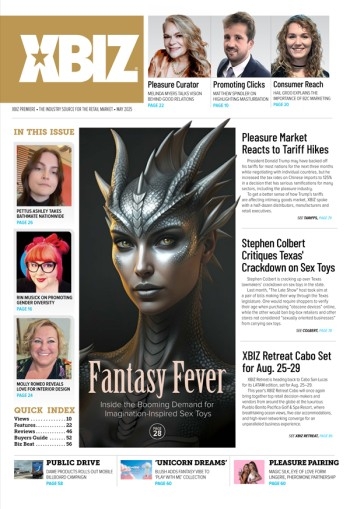As we unpacked our minimalist equipment, I cast a glance to the floor space next door. Here we were with a beneath-the-table server on which to demo our video streaming products and a modest stack of printed handouts, and right next door was a real, honest-to-God trade show booth.
“Damn, these guys are really going for it,” I thought to myself. “I wonder if the ROI is sufficient to justify what they spent on that damn thing?”
Bells and whistles might be a nice distraction, but who needs distraction when you’re trying to hammer out the finer points of a traffic purchase, or nail down the details of a distribution relationship?
It was early 1998, the venue was some Los Angeles hotel, the name of which escapes me now, and the company with the booth next to us was an outfit called iGallery, a name that should ring familiar to industry old-timers (and to those who we old-timers have regaled with tales of the industry’s glory days, as well).
My vague sense of booth-envy quickly turned to sympathy as I listened to one of the people assembling the iGallery booth ripping the booth vendor a new one over the phone. The gist of his complaint was that the vendor hadn’t made sure that everything needed to fully assemble the booth and connect its modular pieces was actually provided to his team, leaving them with a theoretically nice-looking booth that was, for the moment, teetering and wavering like an oversized house of cards in the gentle breeze generated by the hall’s air conditioner.
“Un-be-fucking-lievable!” the exasperated booth owner (who later introduced himself as Greg Dumas) said to himself, shoving his cell phone back into his pocket as he wearily eyed his almost-booth.
Looking back, it’s quaint to the point of hilarity that I thought iGallery’s booth represented something ostentatious or grandiose. Within a year or so, I would witness massive glass-block edifices being erected on adult showroom floors, replete with fully-stocked wet bars, dance stages, and lighting worthy of a latter day Rolling Stones tour. In hindsight, the only reason iGallery’s humble little 15’x10’ panel-and-frame seemed so elaborate is that it was up against a room full of folding tables with construction paper skirting and cheap plastic seating arranged to create the other “booths.”
By 2002, the top bar for adult trade booths had been raised to truly ludicrous heights – in some cases literally. I recall one booth (Cybererotica’s, I think) at a show in Orlando that virtually rose into the piping that ran across the conference hall’s ceiling. At times, when perusing the floor at conferences in the early-to-mid 2000s, I felt like the groupie chick in the cinematic version of Pink Floyd’s The Wall upon walking into the crumbling, drug-addled protagonist’s hotel room: “This is bigger than my whole apartment!”
Whether you witnessed it first-hand or have only heard tale of the sort of excess and extravagance that used to be on display at adult trade shows, you know that those days are over now. Given the current state of the industry, those paper-draped folding tables, cardboard signs and public school plastic chairs are probably looking pretty sensible again to a lot of us, right about now.
The industry-wide reduction on trade show spending isn’t just a function of there being less cash to burn, however; in other ways, it’s a good sign for the industry, because it suggests that we’ve matured a bit, at least in this one, narrow way.
The truth is, it never really made sense to spend heaps of cash on trade shows, whether that cash was thrown at a massive floor presence, extensive sponsorships, elaborate parties, or anything of the kind. True, doing so projected an image of success and solid cash flow and might have created an impression in the mind of some webmasters that your program was the one to promote, but those big booths, car giveaways, swimming pool cash-dives and the like were never as good an idea as intelligently applying that same cash was. There were companies back then spending in the neighborhood of $500,000 on their booth alone; looking back, does anybody think that money would not have been better spent on search engine traffic, hiring or retaining key staff, or virtually any other spending choice that had a prospect of growing the company and/or directly generating revenue?
These days, the shows are humbler, more low-key affairs (in my experience, at least). There’s still plenty of partying, and the occasional venture into showiness for the sake of showiness, but in the main, we’ve chilled out on the “wow ‘em with excess” approach to B2B marketing at the shows.
Some take this reduction in show-opulence as a bad sign for the conferences themselves (and I’m sure it is from the perspective of the people selling sponsorships), but from where I sit, a more reserved approach to shows was badly needed even before the market let us all know that the days of easy money were firmly relegated to our rear-view mirrors.
We don’t go to adult shows to be entertained, after all; ostensibly, at least, we’re there to do business. At the end of the day, if anything I find the inside of glass block booth packed full of strippers and/or other hired gun “booth girls” to be less conducive to deal-making than is a folding table and a plastic chair.
Granted, my fat ass does get sore pretty quickly when squeezed into a plastic chair, but you get the point: the deal, and execution thereof, is what matters. Bells and whistles might be a nice distraction, but who needs distraction when you’re trying to hammer out the finer points of a traffic purchase, or nail down the details of a distribution relationship?
So, while the good old days of open wallets (and open-bar-impaired judgment) make for great stories and enjoyable reminiscing, let’s leave them in the past where they belong, and do our best to make our present and future conferences all about business — or at least reserve the strippers and Jagermeister Slurpee machines as form of post-deal celebration.
A 16-year veteran of the online adult entertainment industry and long-time XBIZ contributor, Q Boyer provides public relations, publicity, consulting and copywriting services to clients that range from adult website operators to mainstream brick and mortar businesses.






